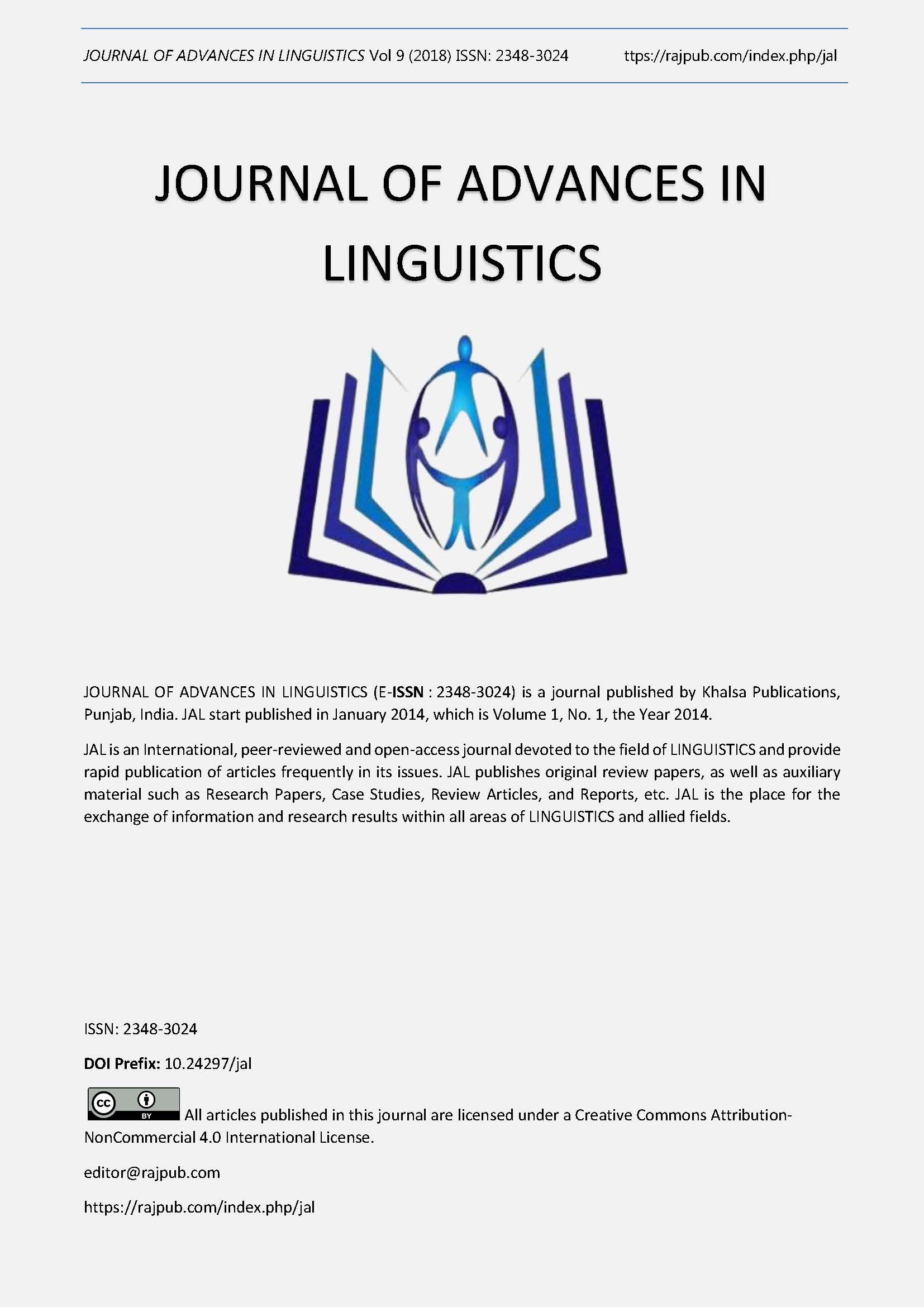Translation of Film Titles Based on Intercultural Communication
DOI:
https://doi.org/10.24297/jal.v9i0.7349Keywords:
Cultural differences, Edward Hall, Hofstede, Film titles translationAbstract
To illustrate cultural differences between China and the western world in translating film titles. Film industry plays a vital role in cultural communications, especially in the trend of globalization, which attaches a greater importance to film title translation than ever before. Some of theories concerning cultural differences will be discussed, including Hall's high-context and Low-context orientations and Hofstede's value dimensions. The study finds that with the help of these theories, certain translation methods can be utilized by translators in order to do a better job when translating titles of imported films.
Downloads
References
Chen Feng, A Forecasting Gross Revenues at the Movie Box Office [J]. University of Washington, Seattle, 2002. 7(2): 6
Fawcett, P. Translation and Language: Linguistic Approaches Explained [M], Manchester: St Jerome.1997.
Fillmore, C. Kempler, D. & Wang. W. Individual Differences in Language Ability and Language Behavior[M]. New York: Academic Press. 1979.
Gile Daniel. Basic Concepts and Models for Interpreter and Translator Training [M]. Amsterdam Philadelphia: John Benjamin's Publishing Company. 2009.
Holmes, James. The Name and Nature of Translation Studies. In Translated Papers on Literary Translation and Translation Studies [M]. Amsterdam: Rodopi. 1988.
Huoyan Wang. A study of college English teaching model based on intercultural Communication [C]. Beijing: Peking University Press. 2012: 78
Hunter P. G., Schellenburg E. G.& Schimmack U. Feelings and Perceptions of happiness and sadness induced by music: Similarities, Differences, and Mixed Emotions. Psychology of Aesthetics, Creativity and the Arts[J], 2010, 4(1): 47
Liu, Q. S. Analysis on American Movies on Chinese College Students from Cross-cultural Communication Perspective[J]. Journal of Hebei University of Economics and Trade. 2009. 9(2): 64
Ma Zuyi. A Brief History of Translation in China until 1919 [M]. Beijing: China Publishing Corporation. 1984.
Nida, Eugene A. Language, Culture, and Translating [M]. Shanghai: Shanghai Foreign Language Education Press, 1993.
Nord, C. Translating as a Purposeful Activity: Functionalist Approaches Explained [M]. Manchester: St Jerome. 1988.
Roger, B. Translation and Translating: Theory and Practice [M]. London: Longman. 1991.
Samovar, L. A., Porter, R. E. & Roy, C. S. Cross-cultural Communication [M]. Beijing: Peking University Press. 2017.
Sapir, E.T. An Introduction to the Study of Speech [M]. New York: Harcourt Brace & Company.1921.
Schuttleworth, M. & Cowie, M. Dictionary of Translation Studies [M]. Manchester: St. Jerome. 1999.
Toutanova K., Klein D., Manning C. D. & Singer Y. the Association for Computational Linguistics on Human Language [M]. Amsterdam: John Benjamin. 2003.
Tymoczko, Maria. Translation in a Postcolonial Context: Early Irish literature in English translation[M]. Routledge. 2016.
Vinay, J. & Darbelnet, J. Comparative Stylistic of French and English: A Methodology of Translation[M]. Amsterdam: John Benjamin. 1995.
Venuti,L. The Translator's Invisibility[M].London & New York: Routledge. 1995.
Xuemei Li, Yu Zhang. Study of Chinese and Western Cultural Differences in Cross-cultural Communication [C]. Beijing: Peking University Press. 2006.
Downloads
Published
How to Cite
Issue
Section
License
 All articles published in Journal of Advances in Linguistics are licensed under a Creative Commons Attribution 4.0 International License.
All articles published in Journal of Advances in Linguistics are licensed under a Creative Commons Attribution 4.0 International License.




